Chaga mushrooms, scientifically known as Inonotus obliquus, are a type of fungus renowned for their medicinal properties. They have a distinctive appearance that aids in their identification.
Chaga mushrooms grow on birch trees in colder climates and appear as large, irregularly formed masses resembling burnt charcoal or a clump of dirt. They exhibit a hard, blackened exterior while the interior is softer and light brown.
Chaga doesn't have the typical mushroom cap and gills; instead, it is a dense mass that can reach a foot in diameter. Its preference for birch trees, northern habitats, and unique appearance are critical factors in the identification process.
Over the centuries, Chaga has been celebrated in traditional medicine, particularly in Siberia, for its wide range of health benefits, including its potent immune-boosting and antioxidant properties. Today, it is gaining global recognition, and many are eager to understand, identify, and utilize this beneficial mushroom. However, Chaga mushroom identification requires knowledge and awareness, as confusion with other less beneficial or harmful species can occur.
This comprehensive guide delves deeper into the world of Chaga mushrooms. We'll cover everything from its distinctive physical characteristics to the environmental conditions it prefers and safe harvesting practices. With accurate information and a mindful approach, you'll be well-equipped to identify Chaga mushrooms and responsibly harvest them, ensuring you can enjoy their benefits without risk.
Understanding Chaga Mushrooms

Unveiling the Chaga Mushroom: A Definition
Chaga mushroom, or Inonotus obliquus, is a medicinal mushroom that primarily grows on birch trees in colder climates. Unlike your traditional mushroom, Chaga fungus is a large, rough mass rather than a cap and stem.
It's often likened to a burnt charcoal chunk or a clump of dirt because of its hard, blackened exterior. However, once harvested, the inside reveals a softer, light-brown hue. Also known as the "clinker polypore," Chaga is widely hailed for its medicinal properties.
The Roots of the Chaga Mushroom: Its History and Origin
Historically, Chaga mushrooms have been used in folk medicine, especially in Siberia and other parts of Asia. This fascinating fungus, growing symbiotically with birch trees, has been appreciated for centuries due to its health-enhancing properties.
'Inonotus obliquus' originates from the Greek words 'inos,' which means fiber, and 'otus,' meaning ear. Combined with 'obliquus,' which implies oblique, it hints at the mushroom's irregular shape. This history underscores the importance of accurately identifying Chaga mushrooms to take advantage of their health benefits.
Immunity Booster: The Common Uses and Benefits of Chaga
One of the most potent benefits of Chaga is its ability to support the immune system. The bioactive compounds present in this medicinal mushroom help balance the body's immune response, making it a sought-after resource, especially during colder seasons when immunity may be weakened.
In addition to supporting the immune system, Chaga has a high antioxidant content, which contributes to overall health and well-being. When correctly identified and harvested, the Chaga fungus can be prepared in various ways, such as brewing your own Chaga tea or grinding it into a powder for supplements.
However, to enjoy the benefits of Chaga, correct identification is crucial. The Chaga mushroom's unique growth pattern on birch trees and its distinctive features aid in its identification. In the coming sections, we'll explore how to identify Chaga accurately and ensure a safe, sustainable harvest.
The Basics of Mushroom Identification
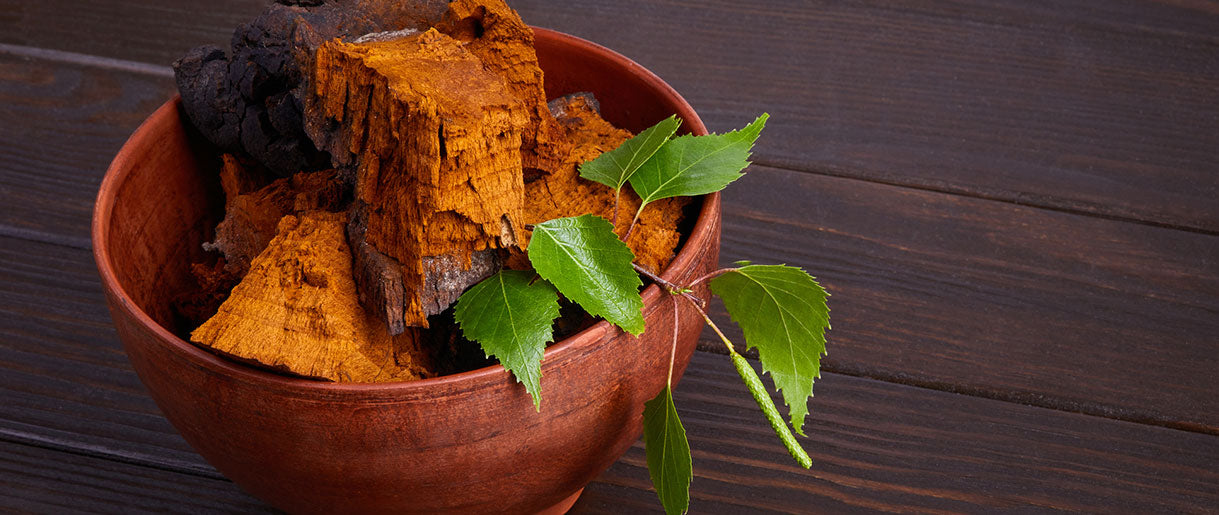
Why Accurate Mushroom Identification Matters
Identifying mushrooms correctly, especially medicinal mushrooms like Chaga, is paramount for several reasons. Primarily, it's a matter of safety; some mushrooms can be toxic or deadly if consumed. Mistaking a poisonous species for a beneficial one can lead to serious health consequences.
Moreover, correctly identifying the Chaga mushroom ensures you harness the desired medicinal benefits. Misidentification can lead to disappointing results if you expect the Chaga benefits but consume a different species. Accurate Chaga mushroom identification allows for a more sustainable harvest, protecting the fungus and the host tree for future growth.
The ABCs of Identifying Mushrooms
The process of identifying mushrooms generally follows several key principles. First, consider the mushroom's environment. For example, Chaga grow on birch trees primarily but can occasionally be found on other trees. It's crucial to identify the host tree correctly.
Second, observe the physical characteristics of the mushroom. Size, shape, color, and texture all play a role in accurate identification. For instance, Chaga mushrooms are usually hard and blackened on the outside, resembling tree burls, while the inside is a softer, cinnamon-brown color. Lastly, remember that seasonality can also impact mushroom growth and appearance.
Pitfalls in Mushroom Identification: Common Mistakes
Common mistakes in mushroom identification often come from not considering all the necessary factors. One frequent error is confusing Chaga with tree burls, growths found on trees that can bear a superficial resemblance to Chaga.
The key to differentiating them lies in their interior: while Chaga has a soft, cinnamon-brown interior, tree burls are hard and woody all the way through. Another mistake is overlooking the host tree; while Chaga grow on birch trees, it can occasionally be found on other trees.
Characteristics of Chaga Mushrooms
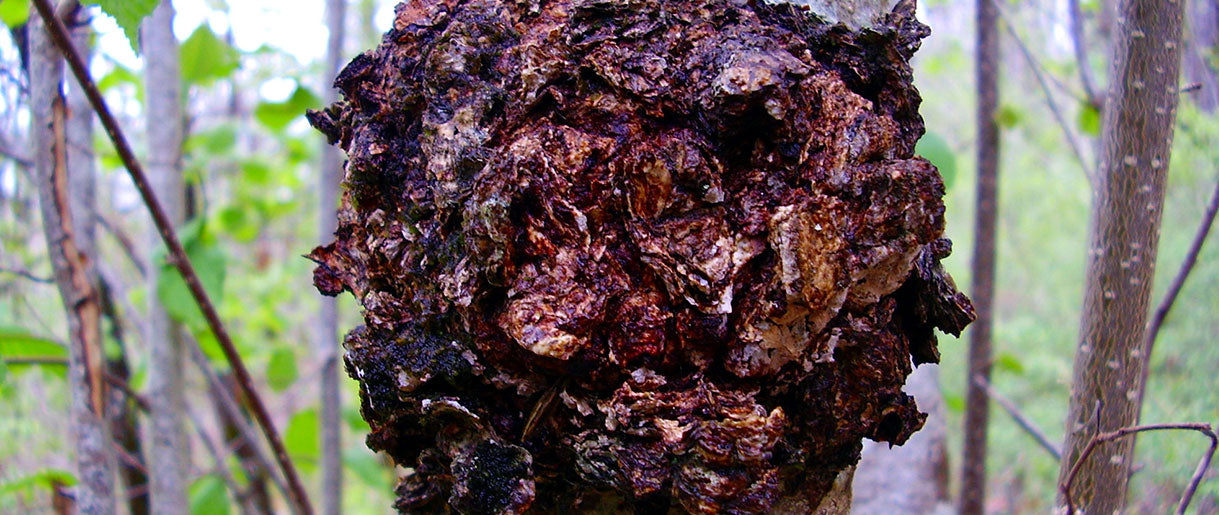
Unmistakable Marks: Physical Characteristics of Chaga
To confidently identify this medicinal mushroom, you need to understand the distinct physical characteristics of Chaga. Unlike other fungi, Chaga doesn't possess the typical cap or stem. Instead, it appears as irregular, rounded outgrowths on the host tree. Here are the most common characteristics of Chaga:
Size
Wild-harvested Chaga chunks vary significantly in size. Depending on the growth conditions, Chaga appears as small as a few inches but can grow to over a foot in diameter.
Shape
Chaga mushrooms typically manifest as rounded outgrowths resembling a tree burl or a burnt blister on the side of birch trees. The shape is often irregular and can differ from mushroom to mushroom.
Color
Fresh Chaga is characterized by a hard, black exterior that gives it a burnt or charred appearance. However, when split open, the inside reveals a contrasting light brown to golden color.
Texture
Chaga exhibits a tough texture on the outside, akin to burnt wood. The inside is less dense, with a somewhat cork-like texture.
Home Sweet Home: Growth Habits and Preferred Habitats of Chaga
Understanding where Chaga grows is essential in finding Chaga in the wild. This fungus has particular preferences regarding its host trees and climate.
Preferred Host Trees
Chaga is commonly found on birch trees, specifically white and yellow birch species. While it can occasionally grow on other trees, birch trees are its favorite host due to betulin, a compound that Chaga absorbs and converts into betulinic acid, a component with potent health benefits.
Climate Conditions
Chaga grows best in cold climates. It is often found in the northern regions of the United States, Canada, Russia, and Northern Europe.
Seasonal Changes: The Impact of Seasonality on Chaga
The fruiting body of the Chaga mushroom can be seen year-round. However, it's believed that Chaga growing in colder months may have higher concentrations of beneficial compounds due to the tree's slowed metabolism.
Thus, the best time for finding and harvesting Chaga is often in late fall to winter. Be sure not to confuse it with the black knot fungus, which can look similar but usually presents in warmer seasons.
Comparison with Similar Species

Mushroom Masqueraders: Species Often Mistaken for Chaga
When identifying medicinal mushrooms like Chaga, it's crucial to differentiate them from species that may look similar. A few fungi and tree growths are commonly mistaken for Chaga, especially by inexperienced foragers.
Interesting Read: Learn about Lion's mane look-alikes.
Among the most frequent are tree burls, abnormal growths that can occur on any tree species, and the black knot fungus, which commonly grows on cherry trees and other fruit trees. Both can mimic Chaga's rough, blackened exterior and are often found on the sides of trees like Chaga.
Differences Between Chaga and Similar Species
While at first glance, other species or tree growths may resemble Chaga pieces, some key characteristics can help differentiate true Chaga:
Tree Species
Chaga primarily grows on birch trees, especially white birch and yellow birch trees. While it can occasionally be found on other trees, sightings are rare. On the other hand, tree burls can appear on any tree, and black knot fungus is commonly found on fruit trees.
Color and Texture
While tree burls may resemble Chaga's black exterior, they're woody and hard throughout, lacking Chaga's soft, brownish interior. Similarly, the black knot fungus has a much harder texture than Chaga and doesn't share the same light brown to golden inner color.
Shape and Size
Chaga tends to form irregular, rounded masses that can vary significantly in size. In contrast, tree burls often have smoother surfaces, and black knot fungus generally forms more elongated growths.
Medicinal Properties
Chaga is renowned for its beneficial health properties. On the other hand, tree burls and black knot fungus do not carry the same medicinal benefits.
Interesting Read: See how Chaga benefits your skin.
Safety Precautions: Staying Safe While Foraging
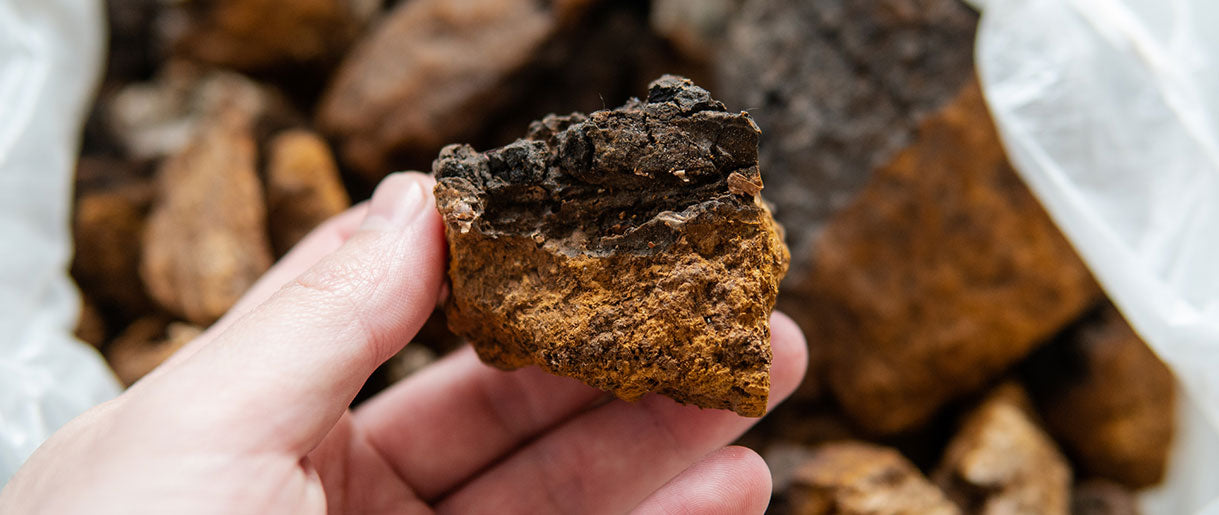
Misstep or Misfortune: The Risks of Misidentifying Chaga Mushroom
Misidentifying mushrooms can have various consequences, from mild disappointment to severe health risks. While Chaga has no toxic look-alikes, mistaking another species for Chaga can lead to missed health benefits or unexpected effects.
For instance, if you consume ground Chaga thinking it is Chaga when it is, in fact, a different species, you may not experience the beneficial effects you were expecting. Therefore, to enjoy the Chaga hair benefits—or any other benefits you might seek—you must identify this mushroom correctly.
Doubts and Dilemmas: What To Do If You're Unsure
If you're uncertain whether the mushroom you've found is indeed Chaga, it's best to refrain from consuming it. You can take clear photos of the mushroom (including its host tree) and consult a local expert or an identification guide for confirmation. Another option is to participate in a local mushroom foraging group where experienced members can assist in correctly identifying your find.
Interesting Read: Learn about Reishi mushroom look-alikes.
Harvesting and Using Chaga Mushrooms
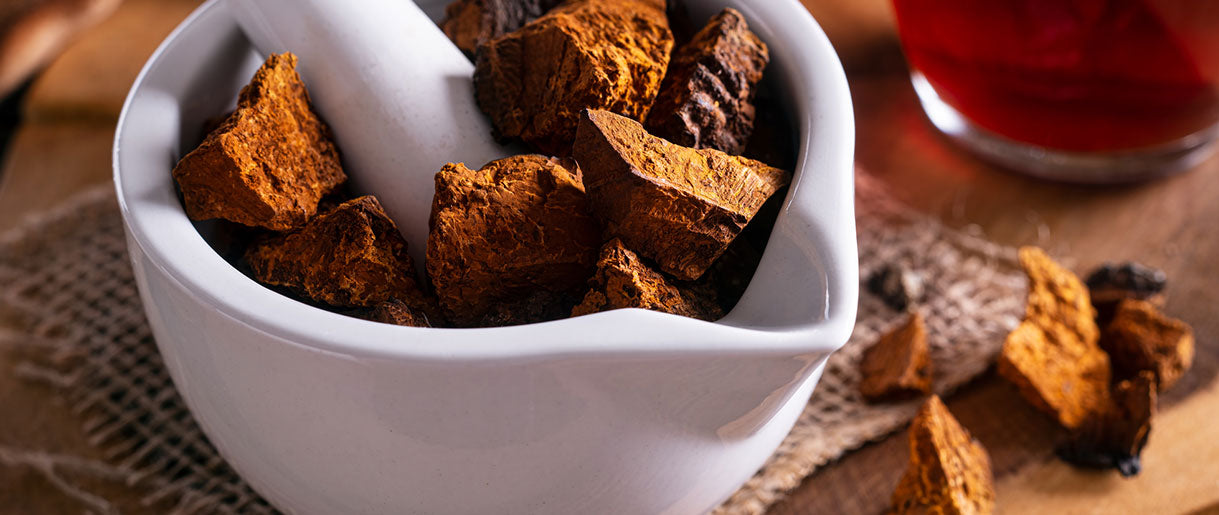
Earth-friendly Harvesting: Ethical and Sustainable Practices
Harvesting Chaga mushrooms from birch trees needs to be done responsibly to avoid over-harvesting and causing unnecessary environmental stress to the trees. Sustainable harvesting practices ensure Chaga's continual growth and preserve birch trees' health. Here are a few fundamental guidelines:
Location and Size
Chaga primarily grows in the northern hemisphere, especially in the northern United States, Canada, and Europe. Before harvesting, ensure that the Chaga growth is at least the size of a grapefruit to allow the fungus to mature and reproduce.
Careful Harvesting
To ensure this fungus is sustainably harvested, we recommend using a sharp tool for cutting. Use a knife or small axe to remove the Chaga from the birch tree. Leave at least 15% of the Chaga on the tree for regeneration. Be careful not to damage the tree bark, which could harm the tree's health.
Seasonality
Winter is the best time to harvest Chaga. This is when the concentration of beneficial compounds is highest.
Interesting Read: Our detailed guide on the two sides of Chaga goes deeper into this topic.
From Tree to Tea: Preparation and Usage of Chaga Mushrooms
Once harvested, Chaga can be used in various ways. Consuming Chaga can support immune function and help manage blood sugar levels, among other benefits. Here is a step-by-step guide on how people use Chaga tea for weight loss and other benefits:
Step #1: Drying
After harvesting, Chaga should be dried thoroughly to prevent mold growth. This can be done by cutting the Chaga into smaller pieces and letting them dry in a well-ventilated, warm area for a few weeks.
Step #2: Preparation
Once dried, Chaga can be ground into Chaga powder using a blender or coffee grinder. This powder can then be used to make Chaga tea, tinctures, or incorporated into foods.
Step #3: Consumption
To make mushroom tea with Chaga, add one to two teaspoons of Chaga powder to hot water and let it steep for 5-10 minutes. Chaga powder can also be added to smoothies or used in cooking and baking for an extra health boost.
Keeping Chaga Fresh: Storing and Preserving Chaga Mushrooms
Proper storage is crucial for preserving Chaga's beneficial properties. Here are some tips for storing Chaga:
- Storage: Store dried Chaga pieces or Chaga powder in an airtight container in a cool, dark place. Avoid exposure to moisture and heat.
- Preservation: Well-stored Chaga can last up to two years without losing its potency. If you notice any signs of mold or an off smell, it's best to discard the Chaga.
As with all foraging activities, respecting nature should be your priority. Always be mindful of the impact of your actions on the ecosystem and harvest responsibly to ensure these medicinal mushrooms can be enjoyed by generations to come.
FAQs About Chaga Mushroom Identification
Are There Any Look-Alike Mushrooms Or Fungi That May Resemble Chaga Mushroom?
Yes, there are a few look-alikes that may be mistaken for Chaga mushroom, especially by those who are new to foraging. Here are the two most common ones:
- Tree Burls: These abnormal growths can occur on any tree species. Burls can sometimes resemble Chaga due to their irregular shape and dark color. However, tree burls are woody and hard throughout, unlike Chaga, which has a softer, brownish interior.
- Black Knot Fungus: Dibotryon morbosum or Apiosporina morbosa; this fungus commonly grows on cherry trees and other fruit trees. Black knot fungus can appear similar to Chaga with its dark, rough exterior, but it tends to form more elongated growths and has a much harder texture than Chaga.
While these look-alikes can be mistaken for Chaga, they don't share the same medicinal properties. Always exercise caution when foraging for mushrooms, and consult a field guide or an experienced forager if you're unsure about your identification.
Are There Any Potential Risks Or Dangers Associated With Misidentifying Chaga Mushroom?
Misidentifying Chaga can pose several risks, although these risks are not generally life-threatening given that Chaga doesn't have toxic look-alikes. Suppose you misidentify another fungus as Chaga and consume it. In that case, you will not receive the health benefits Chaga is known for, such as boosting the immune system and potentially helping reduce inflammation and lower blood sugar levels.
Any time you consume a wild organism, there's a chance of an allergic reaction, mainly if you've never consumed it. Even if a misidentified fungus isn't toxic, it could cause an allergic reaction in some people.
What Are The Key Characteristics Of the Chaga Mushroom That Can Aid Its Identification?
Chaga mushroom, scientifically known as Inonotus obliquus, has several key characteristics that help identify it. Here are some of the most notable ones:
- Host Tree: Chaga primarily grows on birch trees. While it can sometimes be found on other trees, this is rare.
- Physical Appearance: Chaga has a distinct look, often resembling a burnt blister or a chunk of charcoal. The outside of Chaga is dark, almost black, and has a rough, cracked surface similar to the texture of charcoal. It is typically irregular in shape.
- Interior Color: Chaga has a softer, rusty orange-brown inner color when broken open. This stark contrast to its outer color can be a good identification factor.
Remember, if you're unsure whether you've correctly identified Chaga, it's best to consult an expert or a detailed field guide before harvesting or consuming.
Key Takeaways
To wrap things up, the art and science of identifying Chaga mushrooms are as intriguing as they are crucial. Proper identification ensures that you reap the numerous health benefits of this medicinal mushroom while preventing unwanted health implications from misidentification.
Chaga is uniquely characterized by its burnt, crusty exterior and softer, brown interior. It most commonly grows on birch trees in colder climates of the Northern Hemisphere, adding to its distinctiveness.
As you search the woods for this fascinating fungus, we implore you to forage responsibly. Respect nature, mindful of preserving the ecosystem's vitality and ensuring the Chaga mushroom's continual growth. Over-harvesting can lead to environmental stress and decrease the availability of this medicinal gem for future generations. Always aim for sustainable harvesting, leaving a part of the Chaga to allow for its regeneration.
Do you have any personal experiences with identifying and harvesting Chaga? Have you used Chaga in your wellness routine, or do you have any unique recipes to share? We'd love to hear from you. Join our community of nature enthusiasts and health-conscious individuals by commenting below. Let's learn from each other and continue spreading knowledge about this powerful, medicinal mushroom.




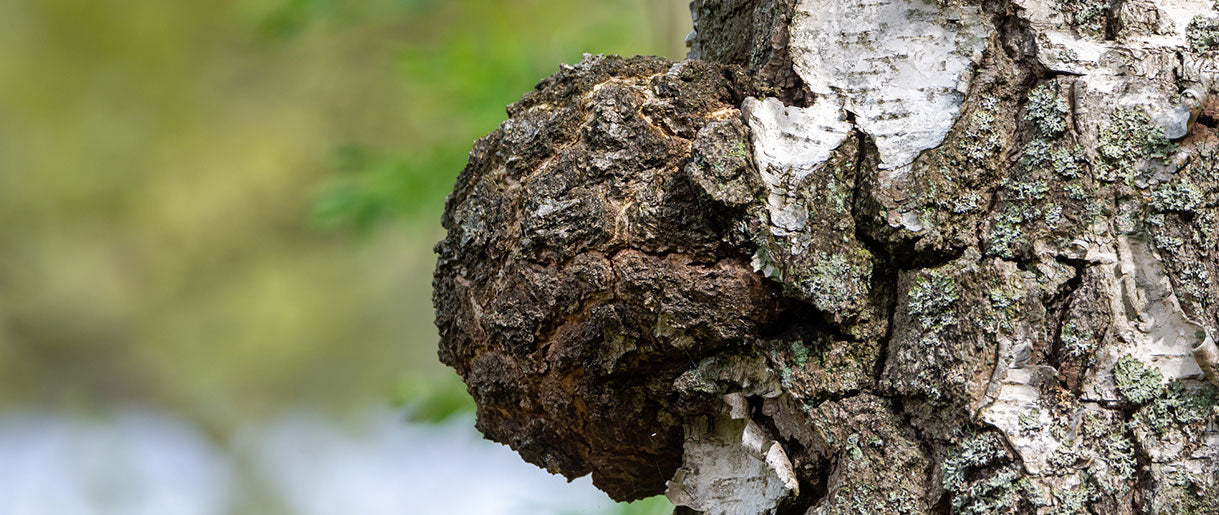




Let Us Know Your Comments